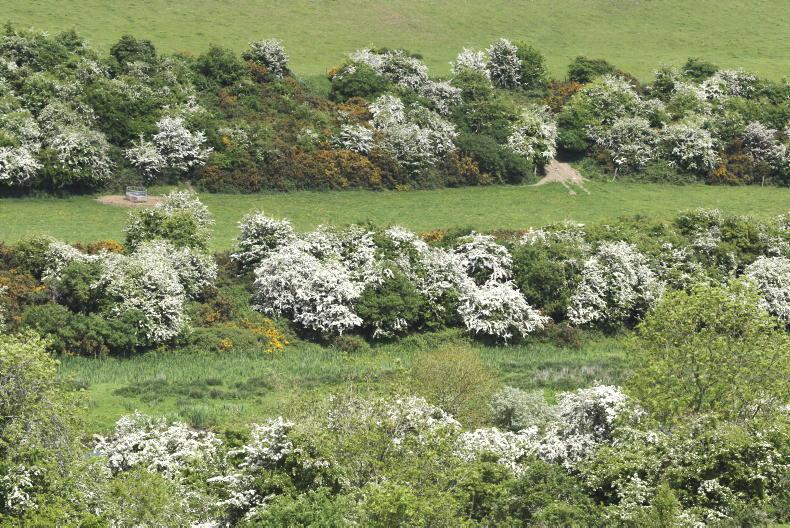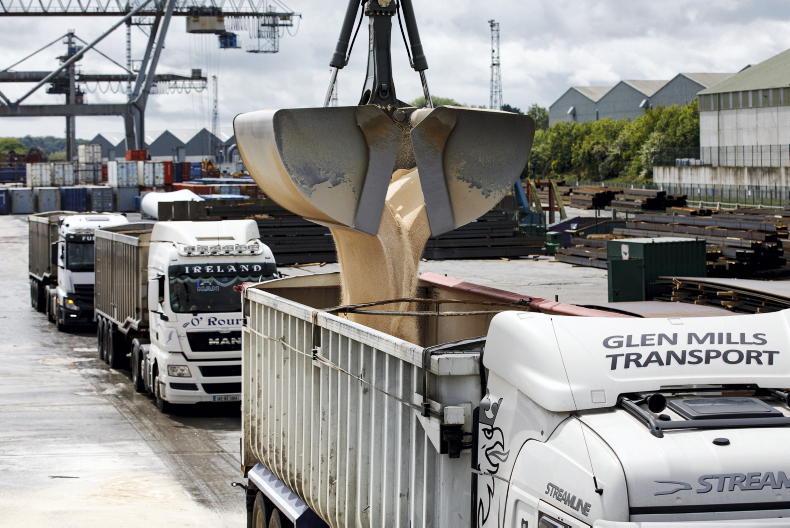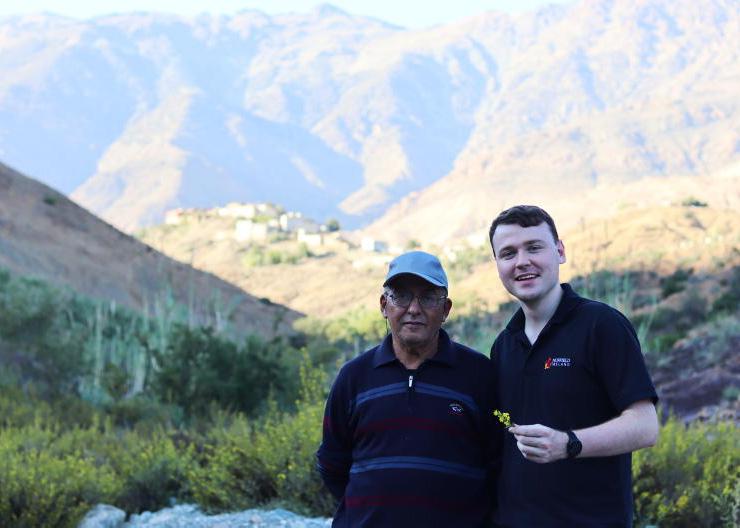What do the European Central Bank (ECB) and the Irish Environmental Protection Agency (EPA) have in common? They have both recently published research which, at their core, attempts to put a value on nature.
The EPA paper, prepared by Trinity College Dublin and listing 12 authors, is titled “Irish Natural Capital Accounting for Sustainable Environments”, or INCASE for short. The paper, in its introduction, describes natural capital as an approach, which “frames nature and ecological, geological, hydrological and atmospheric systems as assets, from which goods and services flow”.
To put it in more blunt language, nature is an asset that produces a yield of goods and services.
Natural capital accounting is a process for recording and tracking changes in stocks and flows of these natural capital assets.
According to the EPA paper, these natural assets include biodiversity and ecosystems, as well as air, water and geology. Accounting for these assets in financial terms can help inform planning and management of natural capital, as well as monitoring progress towards achieving environmental goals.
The United Nations has, as part of its Sustainable Development Goals, developed the System of Environmental Economic Accounting-Ecosystem Accounting (SEEA-EA), which aligns with the System of National Accounts – the baseline by which countries calculate Gross Domestic Product – and has become the primary tool for nations to integrate biodiversity and ecosystems into their national accounts.
The INCASE report, which is based on research carried out and data from 2018 to 2022, used SEEA-EA to create a set of accounts at a sub-national level, specifically at a catchment scale in Ireland.
Four rivers
The project looked at four rivers to find a good cross section of catchments in Ireland. The Dargle – east coast urban, upland; the Figile – midlands, peat; the Bride – southern, grassland; and the Caragh – west coast, rural upland.
When looking at any piece of natural capital, and valuing it, there are four criteria which can be assessed under the UN method.
The asset extent – basically, how big is it and what does it contain; asset condition – natural capital that is in better condition will be better able to deliver services, for example, carbon sequestration in undrained versus drained peatland; services – identification of the services provided by the system, whether within or as a product of the system; benefit – the benefit to humans and other identified beneficiaries.
The problem, however, that is highlighted in the INCASE study is that as natural capital accounting remains a relatively new discipline, some of the biophysical datasets are incomplete, while there is not enough expertise to roll out the method for all of Ireland.
The focus should be on developing biophysical accounts rather than monetary accounts
This does not stop the authors of the paper calling for increased focus on natural capital accounting, saying that developing it for Ireland is “a national priority”, as there is no time to lose in “addressing urgent environmental issues”.
The paper also suggests that the focus should be on developing biophysical accounts rather than monetary accounts, which will “take too much time” and would “vary according to market demand, supply and valuation techniques”.
Basically, the paper suggests that the one useful outcome from natural capital accounting – a value on nature – may be too difficult to accurately calculate, and would likely change anyway.
Perhaps then, the ECB is the place we should look for an idea of what nature is worth. After all, a central bank is all about the price of everything.

Whitethorn in Louth.
The paper, published by the central bank, is titled “the impact of the euro area economy and banks on biodiversity” and is an attempt to quantify the environmental impact of economic activity in the euro area, and further calculate how much bank lending adds to that environmental impact.
Rather disappointingly, the ECB does not use a monetary value for that impact. The paper instead opts to use a unit of “one hectare of pristine natural habitat”.
It finds that, overall, the euro area economy has an impact equivalent to the loss of 582m hectares of “pristine” natural areas worldwide.
Non-financial corporations within the euro area account for the loss of 398m hectares of pristine natural areas, according to the research.
The ECB paper says that nature-related risks have global reach through supply chains
It should be noted that the area of land used for agricultural production in 2020 was 157.4m hectares – considerably lower than either of the figures cited for the habitat lost.
This is because the euro-area economy has many externalities or impacts outside its geographic location.
The ECB paper says that nature-related risks have global reach through supply chains.
There is also an expansion of the global effect of euro-area economic activity through the relocation of manufacturing.
Manufacturing
A firm based in the euro area might move manufacturing to a developing nation, a decision which could lead to an improvement in local nature and biodiversity. But it is one which could lead to a drop in global biodiversity, as the problem has only been moved, but now will likely also have added supply-chain costs.
The ECB paper’s conclusions are along the lines of the EPA one. It says “actions today will clearly determine the impact of nature-related losses on the economy and financial systems, through both physical and transition risk. Timely recognition, assessment and action to address these challenges are essential to prevent future economic downturns”, adding that “we must build a scientifically sound analytical framework to assess the complex interactions between nature, the macroeconomy and the financial system, as well as bridging the data gaps”.
Fundamentally, both papers are saying three things: first, that we must have a way of accounting for the value of nature; secondly, that we are running out of time to get that right in order to both make better decisions and correctly measure the impact of what we are already doing and; finally, nobody is really sure how to actually put a monetary value on what nature is actually worth.
What do the European Central Bank (ECB) and the Irish Environmental Protection Agency (EPA) have in common? They have both recently published research which, at their core, attempts to put a value on nature.
The EPA paper, prepared by Trinity College Dublin and listing 12 authors, is titled “Irish Natural Capital Accounting for Sustainable Environments”, or INCASE for short. The paper, in its introduction, describes natural capital as an approach, which “frames nature and ecological, geological, hydrological and atmospheric systems as assets, from which goods and services flow”.
To put it in more blunt language, nature is an asset that produces a yield of goods and services.
Natural capital accounting is a process for recording and tracking changes in stocks and flows of these natural capital assets.
According to the EPA paper, these natural assets include biodiversity and ecosystems, as well as air, water and geology. Accounting for these assets in financial terms can help inform planning and management of natural capital, as well as monitoring progress towards achieving environmental goals.
The United Nations has, as part of its Sustainable Development Goals, developed the System of Environmental Economic Accounting-Ecosystem Accounting (SEEA-EA), which aligns with the System of National Accounts – the baseline by which countries calculate Gross Domestic Product – and has become the primary tool for nations to integrate biodiversity and ecosystems into their national accounts.
The INCASE report, which is based on research carried out and data from 2018 to 2022, used SEEA-EA to create a set of accounts at a sub-national level, specifically at a catchment scale in Ireland.
Four rivers
The project looked at four rivers to find a good cross section of catchments in Ireland. The Dargle – east coast urban, upland; the Figile – midlands, peat; the Bride – southern, grassland; and the Caragh – west coast, rural upland.
When looking at any piece of natural capital, and valuing it, there are four criteria which can be assessed under the UN method.
The asset extent – basically, how big is it and what does it contain; asset condition – natural capital that is in better condition will be better able to deliver services, for example, carbon sequestration in undrained versus drained peatland; services – identification of the services provided by the system, whether within or as a product of the system; benefit – the benefit to humans and other identified beneficiaries.
The problem, however, that is highlighted in the INCASE study is that as natural capital accounting remains a relatively new discipline, some of the biophysical datasets are incomplete, while there is not enough expertise to roll out the method for all of Ireland.
The focus should be on developing biophysical accounts rather than monetary accounts
This does not stop the authors of the paper calling for increased focus on natural capital accounting, saying that developing it for Ireland is “a national priority”, as there is no time to lose in “addressing urgent environmental issues”.
The paper also suggests that the focus should be on developing biophysical accounts rather than monetary accounts, which will “take too much time” and would “vary according to market demand, supply and valuation techniques”.
Basically, the paper suggests that the one useful outcome from natural capital accounting – a value on nature – may be too difficult to accurately calculate, and would likely change anyway.
Perhaps then, the ECB is the place we should look for an idea of what nature is worth. After all, a central bank is all about the price of everything.

Whitethorn in Louth.
The paper, published by the central bank, is titled “the impact of the euro area economy and banks on biodiversity” and is an attempt to quantify the environmental impact of economic activity in the euro area, and further calculate how much bank lending adds to that environmental impact.
Rather disappointingly, the ECB does not use a monetary value for that impact. The paper instead opts to use a unit of “one hectare of pristine natural habitat”.
It finds that, overall, the euro area economy has an impact equivalent to the loss of 582m hectares of “pristine” natural areas worldwide.
Non-financial corporations within the euro area account for the loss of 398m hectares of pristine natural areas, according to the research.
The ECB paper says that nature-related risks have global reach through supply chains
It should be noted that the area of land used for agricultural production in 2020 was 157.4m hectares – considerably lower than either of the figures cited for the habitat lost.
This is because the euro-area economy has many externalities or impacts outside its geographic location.
The ECB paper says that nature-related risks have global reach through supply chains.
There is also an expansion of the global effect of euro-area economic activity through the relocation of manufacturing.
Manufacturing
A firm based in the euro area might move manufacturing to a developing nation, a decision which could lead to an improvement in local nature and biodiversity. But it is one which could lead to a drop in global biodiversity, as the problem has only been moved, but now will likely also have added supply-chain costs.
The ECB paper’s conclusions are along the lines of the EPA one. It says “actions today will clearly determine the impact of nature-related losses on the economy and financial systems, through both physical and transition risk. Timely recognition, assessment and action to address these challenges are essential to prevent future economic downturns”, adding that “we must build a scientifically sound analytical framework to assess the complex interactions between nature, the macroeconomy and the financial system, as well as bridging the data gaps”.
Fundamentally, both papers are saying three things: first, that we must have a way of accounting for the value of nature; secondly, that we are running out of time to get that right in order to both make better decisions and correctly measure the impact of what we are already doing and; finally, nobody is really sure how to actually put a monetary value on what nature is actually worth.











SHARING OPTIONS